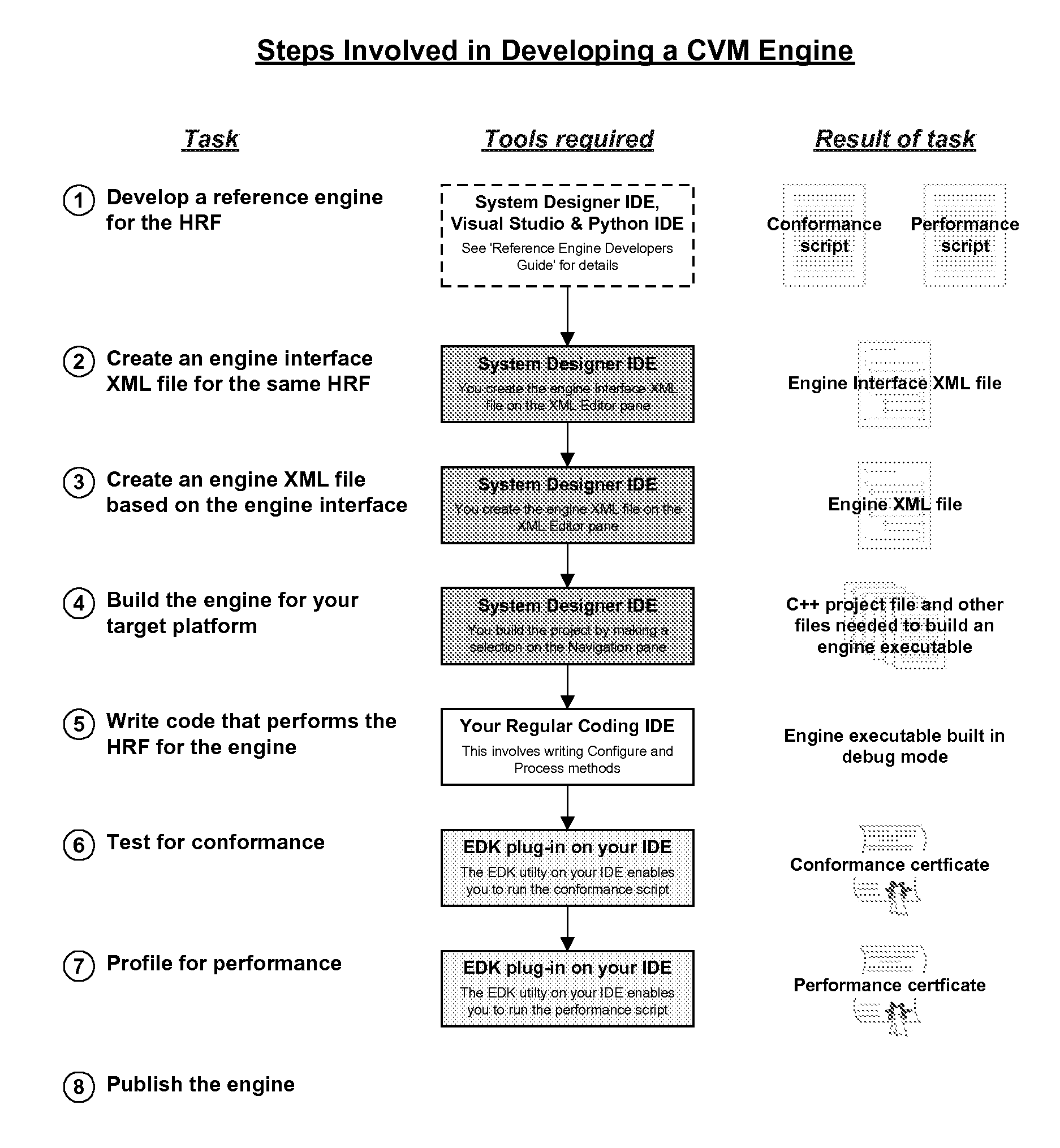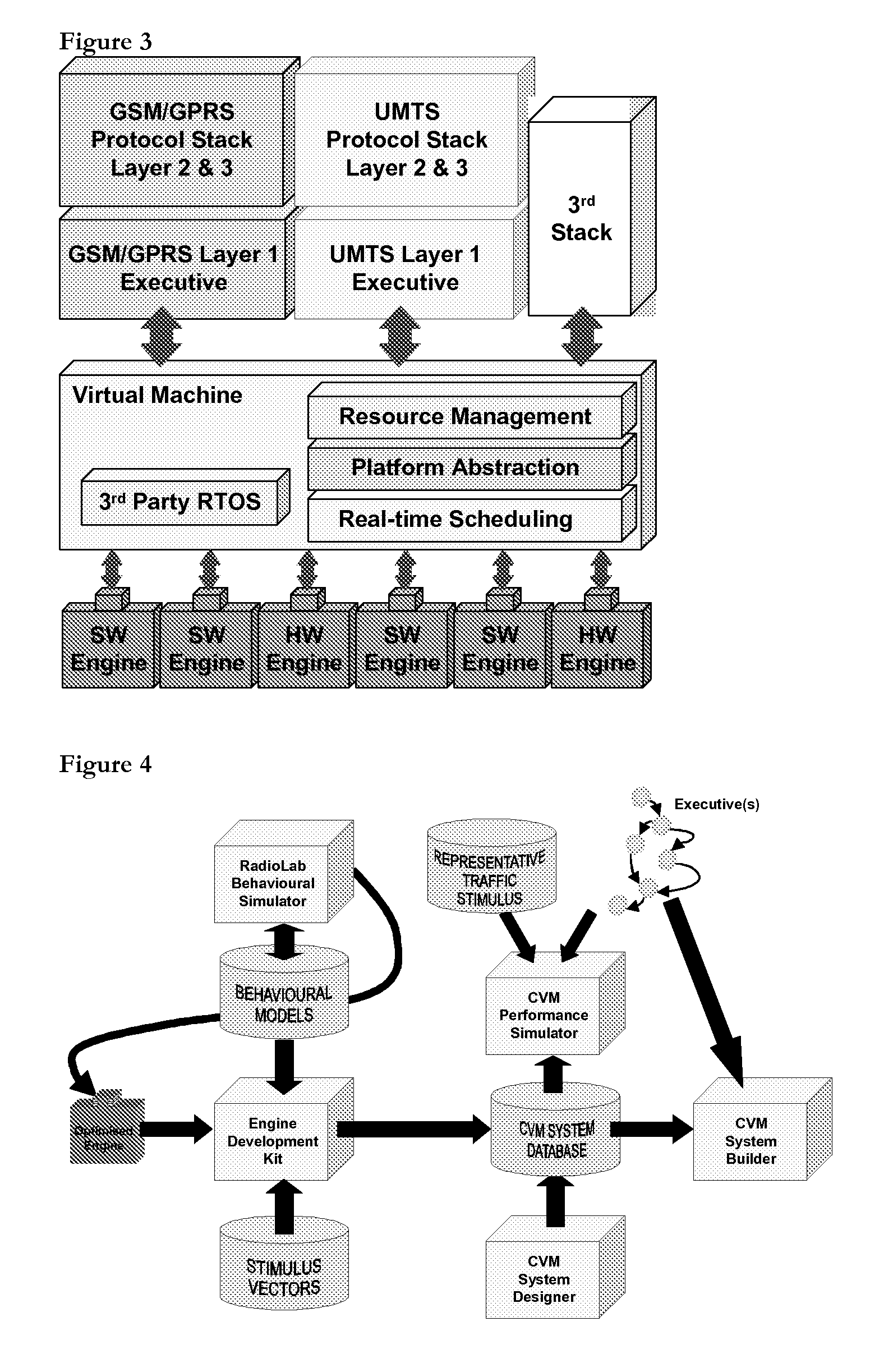Device Comprising a Communications Stick With A Scheduler
a communication stick and scheduler technology, applied in the direction of program control, specific program execution arrangements, program initiation/switching, etc., can solve the problems of essentially unworkable multi-channel packet based system with high peak-to-mean resource loading profile, complex modern communications system, etc., and achieve the effect of graceful degradation of system performan
- Summary
- Abstract
- Description
- Claims
- Application Information
AI Technical Summary
Benefits of technology
Problems solved by technology
Method used
Image
Examples
Embodiment Construction
[0033]The present invention will be described with reference to an implementation from Radioscape Ltd of London, United Kingdom: the CVM (communication virtual machine).
[0034]1. Overview of Predictive Scheduling
[0035]We believe that the use of predictive scheduling policies, coupled to the CVM runtime and design and simulation tools, provides a valid solution to the multimode problem (i.e. where we have a number of independent executives, which must be scheduled over a single physical thread), while not sacrificing overall system efficiency.
[0036]Under the CVM, a communications stack is split up into engines (high resource transforms, which are either implemented in custom hardware or in DSP assembly code), and executives (the rest of the software, written in a hardware-neutral language such as C). Engines must utilise a standard argument-passing format, conform in behaviour to a published model, and provide a resource utilisation profile of themselves (for memory, cycles etc.). All...
PUM
 Login to View More
Login to View More Abstract
Description
Claims
Application Information
 Login to View More
Login to View More - R&D
- Intellectual Property
- Life Sciences
- Materials
- Tech Scout
- Unparalleled Data Quality
- Higher Quality Content
- 60% Fewer Hallucinations
Browse by: Latest US Patents, China's latest patents, Technical Efficacy Thesaurus, Application Domain, Technology Topic, Popular Technical Reports.
© 2025 PatSnap. All rights reserved.Legal|Privacy policy|Modern Slavery Act Transparency Statement|Sitemap|About US| Contact US: help@patsnap.com



